new posts in all blogs
Viewing: Blog Posts Tagged with: LANDSCAPE, Most Recent at Top [Help]
Results 26 - 50 of 144
How to use this Page
You are viewing the most recent posts tagged with the words: LANDSCAPE in the JacketFlap blog reader. What is a tag? Think of a tag as a keyword or category label. Tags can both help you find posts on JacketFlap.com as well as provide an easy way for you to "remember" and classify posts for later recall. Try adding a tag yourself by clicking "Add a tag" below a post's header. Scroll down through the list of Recent Posts in the left column and click on a post title that sounds interesting. You can view all posts from a specific blog by clicking the Blog name in the right column, or you can click a 'More Posts from this Blog' link in any individual post.
My first novel in several years is out this week – Like
Hybrids it's still YA, it's still set in the future, but it's very different in subject matter. I thought it might be interesting to talk about why I wanted to write it.
I lived in mid-Wales, where
Stormteller is set, for nearly 20 years. After separating from my first wife I eventually landed up in Taliesin, partly because I was attracted to a place named after Wales' legendary bard.
I know the landscape almost as well as I know my back garden now, having walked over much of it. I always felt when I moved to this edge of the British Isles from London that here, unlike most places, the skin of the present is thin: you can feel the vibrations from the past still reverberating down the centuries like thunder beneath your feet.
Just inland from Taliesin village is a collapsed dolmen that is given the name 'Taliesin's grave' – though it is much older than that.
Between my house at that time and the sea, lies Borth bog: you may remember the images in the media last winter when flames were leaping across it from burning peat despite the snow: spooky.
And then
Borth itself: a long sliver of a town that shouldn't be there, streamed onto a spur of land against the glint of the sea, on a section of coast that is the most vulnerable in the whole of Wales to storm surges. Again, it was in the media last winter when it was attacked by giant waves.
The spur continues to Ynys Las, a nature reserve of sand dunes opposite the Dyfi estuary from Aberdyfi – a colony of English retirees and yachting people largely immune to the influence of the past.
Above it, however, by the Bearded Lake, is allegedly a footprint left by King Arthur when he passed this way, and north of there the mountain Cader Idris, Welsh for
Seat of Arthur.
But the real stories that come from this area are older than Arthur's: the
birth of Taliesin and
Cantr'er Gwaelod, which is the tale of how the land that now lies beneath Cardigan Bay was drowned by the sea.
It's these, and the beautiful, wild and dramatic landscape, that sparked my imagination to write this novel.
Let me tell you the beginning of the first story: a mother had two children – a beautiful girl and a hideous boy with a hunched back. The girl wasn't a problem, she's not even part of the story, probably got married off to a Prince.
But the boy... the mother felt sorry for him. Perhaps the gift of wit and wisdom might make him popular so she could get him off her hands. So she laboured a year and a day to make a magic potion for him, but on the last day she left the servant boy, Gwion, in charge while she popped out. "Just stir: don't taste," she told him.
You can probably guess what happened next. The long and the short of it is that Gwion got to sample the potion and he received all the gifts intended for the son. He was the one who became Taliesin.
Nowadays, Taliesin is revered in Wales and beyond for his poetic and shamanic genius. But his talents should have belonged to someone else – the son, whose name is Afagddu. No one remembers him now, but Taliesin has a village and even an arts centre named after him.
So I thought: how would Afagddu feel? What would he want?
And this is a starting point for
Stormteller.
As a rebirthed baby, Gwion floated down the Dyfi river to Ynyslas where he was found by a local prince, who named him Taliesin. That leads into the second story....
...with a tragic ending – the flooding of the land – that it seemed to me has echoes of the threat that Borth and the whole coast of Britain faces now and in the future: rising sea levels, more storms and extreme weather caused by climate change.
We all feel threatened by
climate change. We feel powerless to do anything about it. So I wanted the novel partly to be about giving some degree of optimism. It's trying to look at the question of rewriting the endings of stories: ours – about climate change – and these two old legends.
It's easy to give into a sense of fatalism. I believe that we can all rewrite our stories, we at least have the power to do that. And this is true for the teenagers Tomos and Eira in the novel. But, as in life, there are always sacrifices to be made...
You can find out more about the
background to the novel here.
Last Saturday was Urban Sketchers Yorkshire's August SketchCrawl day. This time we were out in Derbyshire, doing a sketch-walk between village pubs.
I can't take any credit for the success of the day, as it was organised by Andrea and Paul, members who live in Derbyshire. It was nice for a change for me to be able to relax and follow orders, rather than be the boss.
We met up at the Pride of the Peaks pub in New Mills, where those of us who'd had an early start to get there, treated ourselves to a cooked breakfast (yum). Well, we needed to build up the strength in our drawing-arms, didn't we?
We then went out into the sunshine to do our first sketch of the day, while we waited for all the idlers, who couldn't quite drag themselves out of bed, to join us. There are some great views in that area, because of the depth of the valley and the old, disused mill buildings:
I was peering over a wall by the bus stop, but it looks as though I was hanging out of a hot-air balloon! The group has been sketching there once before - we did a sketchcrawl in New Mills last summer - and I doubt this is the last time we'll visit either.
We set off from the pub at 11.00, on a beautiful walk down into the valley and along the canal to our next stop, the Soldier Dick pub at Furness Vale. There were some scenic places to sketch along the canal, but many of us treated it as more of a drink stop.
There were more canal views at the next stop anyway, looking down into Buxworth Canal Basin:
The Navigation Inn at Buxworth was a great lunch stop and the sun was mostly still shining, although it had got really windy and I struggled to hang on to my book while doing the sketch above - the wind kept trying to grab it and throw it into the canal!
My final stop of the day was half an hour further down the valley at White Hough. The Paper Mill pub had gardens at the front and back, with views of the lovely Cracken Edge. I did the painting below and then the one at the top, again peering over a wall.
Unfortunately, we Sheffield-based people had to leave after that, for a final walk to Chinley, to catch our train home, but the locals carried on to another pub at Whaley Bridge, and the more intrepid amongst them climbed up Eccles Pike. I was sad to miss that, but enjoyed the train journey back through the hills with my sketch-buddies, sharing our work.
A huge thanks to Andrea Joseph and Paul Gent for sorting out all the logistics and herding us between pubs. Another lovely day!
By:
Floating Lemons,
on 8/10/2014
Blog:
Bit by Bit
(
Login to Add to MyJacketFlap)
JacketFlap tags:
illustration,
tree,
Moleskine,
Drawings,
cactus,
landscape,
mountains,
river,
spoonflower,
floating lemons,
cacti,
Marker pens,
daily drawing,
#SpoonChallenge,
Add a tag
I've been so extra busy this past couple of months that I've barely had time to draw. So you'd be forgiven for considering me certifiably insane when I tell you that I joined the one month Spoonflower daily drawing challenge ... but you see, it's because I couldn't make time to draw that I joined it. I needed that push, excuse, motivation ... to pick up the pens or pencils again and indulge in some much needed creative therapy.
And it's been wonderful. Fine, I was a bit late with a couple of the pieces (busy busy busy, remember?) but so far I've managed to keep up - by the skin of my teeth perhaps, but still. Here are the first 5 themed sketches, drawn in my moleskine sketchbook:
1. CACTUS

2. MOUNTAIN

3. TREE

4. LANDSCAPE

5. RIVER

I'm quite pleased with myself. I had tons of fun, and there are loads of ideas that I can use and carry on playing with, from each of the drawings. But the main thing is (have I mentioned?), I had tons of fun.
One of my in-progress pieces was also featured in the Spoonflower blog round-up of drawings from week 1, how absolutely cool is that? Can't wait for the coming week - and it's not too late to join the daily challenge if you wish to. Just pick that pen/pencil/brush up, and then #SpoonChallenge the results onto your social media ... for details and the daily topic, check out the Spoonflower blog. Wishing you a fantastic week. Cheers.



It's been a bit quiet on the blog this summer, just imagine the radio silence like the surface of a pool, and all the fish are swarming around under water. My recent side project has been to participate in the MIID Summer School, beginner level. I love color and pattern, and this is just so much fun - and a lot more to learn!
Here is my submission for the beginner track creative brief #1 - tropical paradise
you can see the rest of the gallery with all seven pages of amazing designs (!) over
here
As usual I was having trouble deciding on a direction for my final assignment. I ended up dedicating this picture to a good friend who taught me how to make a mean margarita.
This is set in her lovely garden surrounded by her flowers.
Check out the amazing work of my fellow students here in the
gallery
and a field of flowers this time....
 |
| watercolor and collage |
maybe this is my new approach to Illustration Friday, usually I spend most of the time trying to decide on an image :)
Have a nice day friends!
We are having a (probably) brief heatwave here in the UK and Sheffield has been gorgeous. It's been very hard to stay indoors and work. We had the excuse on Friday that I needed to go to the art shop, so we drove out to Rowsley in Derbyshire (where there's a great place that's like an Aladdin's cave you can wander round).
Of course, that was only round the corner to Chatsworth House, so we took a little detour and sat on the grass while I did this watercolour sketch of one of the gatehouses:
By then the clouds were rolling in anyway, so I didn't mind going home and getting on with work.
The good news was that it was still hot and dry for the weekend. We joined lots of other people in the Botanical Gardens on Saturday. We had a picnic, then of course I did the usual:
I started with the sketch below, working with watercolour first, then adding occasional bits of texture and detail with a few watercolour pencils and some white chalk. I have always found the intensity of full-on undergrowth quite a challenge. It's tricky is getting the shadows into areas between the brighter leaves, unless of course you are working on a dark background to start with.
I felt that, because of this struggle, I had slightly overworked it, so I did another from the same viewpoint but tackled completely differently. I sploshed the 3 coloured areas in before I began, in a deliberately inaccurate way, then did the line drawing as soon as it was dry (didn't take long in that sunshine). I was going to use pen, but decided a black line would be too heavy on the pastel colours, so went for two different coloured pencils instead:
I didn't know how it would come out (that is a big part of the fun for me), but was really pleased with the lightness of touch and the playfulness the technique provided.
Today's warm-up done with #procreateapp on the iPad. The view out my window, snow and all! I'm not too smooth painting with the iPad yet, but I hope I'll get used to it eventually.

By: ChloeF,
on 3/21/2014
Blog:
OUPblog
(
Login to Add to MyJacketFlap)
JacketFlap tags:
Geography,
landscape,
earth,
VSI,
climate change,
Very Short Introductions,
geology,
glacial,
Ice Age,
glaciers,
buckland,
*Featured,
Little Ice Age,
The Ice Age,
agassiz,
Earth & Life Sciences,
glaciation,
James Hutton,
Jamie Woodward,
Louis Agassiz,
radiocarbon dating,
William Buckland,
tarmachan,
hutton,
Add a tag

By Jamie Woodward
On 23 September 1840 the wonderfully eccentric Oxford geologist William Buckland (1784–1856) and the Swiss naturalist Louis Agassiz (1809–1873) left Glasgow by stagecoach on a tour of the Scottish Highlands. The old postcard below provides a charming hint of what their horse-drawn jaunt through a tranquil Scottish landscape might have been like in the autumn of 1840. It shows the narrow highway snaking through a rock-strewn Hell’s Glen not far from Loch Fyne. This was the first glacial fieldtrip in Britain. These geological giants were searching for signs of glacial action in the mountains of Scotland and they were not disappointed.
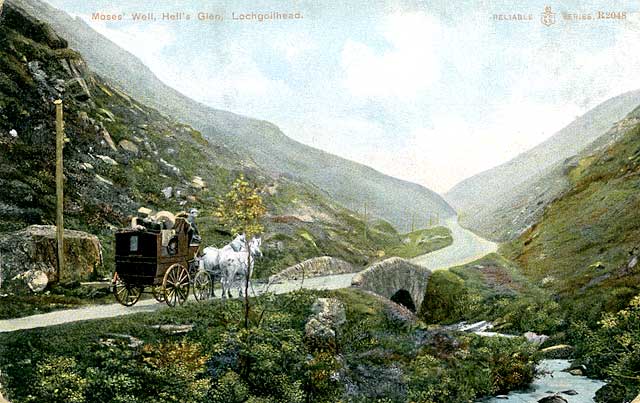
Image from edinphoto.org.uk. Used with permission.
This tour was an especially important milestone in the history of geology because, for the first time, the work of ancient glaciers was reported in a country where glaciers were absent. Agassiz wasted no time in communicating these findings to the geological establishment. The following is an extract from his famous letter that was published in The Scotsman on 7 October 1840 and in The Manchester Guardian a week later:
“… at the foot of Ben Nevis, and in the principal valleys, I discovered the most distinct morains and polished rocky surfaces, just as in the valleys of the Swiss Alps, in the region of existing glaciers ; so that the existence of glaciers in Scotland at earlier periods can no longer be doubted.”
These discoveries initiated new debates about climate change and the extent to which the actions of glaciers had been important in shaping the British landscape. These arguments continued for the rest of the century. In 1840 Buckland and Agassiz had no means of establishing the age of the glaciation because the scientific dating of landscapes and geological deposits only became possible in the next century. They could only state that glaciers had existed at “earlier periods”.
At the end of the previous century, in his Theory of the Earth (1795), Scotsman James Hutton became the first British geologist to suggest that the glaciers of the Alps had once been much more extensive. He set out his ideas on the power of glaciers and proposed that the great granite blocks strewn across the foothills of the Jura had been dumped there by glaciers. This was several decades before Agassiz put forward his own grand glacial theory. Hutton did not speculate about the possibility of glaciers having once been present in the mountains of his homeland.
Following the widespread use of radiocarbon dating in the decades after the Second World War, it was established that the last Scottish glaciers disappeared about 11,000 years ago at the close of the last glacial period. Many of the cirques of upland Britain are now occupied by lakes and peat bogs which began to form soon after the ice disappeared. By radiocarbon dating the oldest organic deposits in these basins, it was possible to establish a minimum age for the last phase of glaciation. A good deal of this work was carried out by Brian Sissons at the University of Edinburgh who published The Evolution of Scotland’s Scenery in 1967.
Geologists now have an array of scientific dating methods to construct timescales for the growth and decay of glaciers. The most recent work in some of the high cirques of the Cairngorms led by Martin Kirkbride of Dundee University has argued that small glaciers may have been present in the Highlands of Scotland during the Little Ice Age – perhaps even as recently as the 18th century. These findings are hot off the press — published in January 2014. Kirkbride’s team employed a relatively new geological dating technique that makes use of the build-up of cosmogenic isotopes in boulders and bedrock exposed at the Earth’s surface.
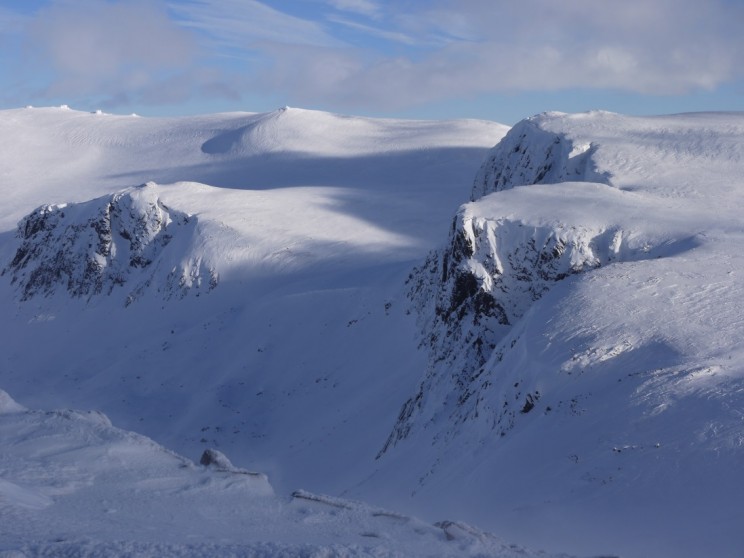
Photograph from Tarmachan Mountaineering. Used with permission.
So in 2014 we have a new interpretation of parts of the glacial landscape and a debate about the climate of the Scottish mountains during The Little Ice Age. This latest chapter in the study of Scottish glaciation puts glacial ice in some of the highest mountains about 11,000 years later than previously thought. The Scottish uplands receive very heavy snowfalls – the superb photograph of the Cairngorms shows this very clearly – and many snow patches survive until late summer. But could small glaciers have formed in these mountains as recently as The Little Ice Age? Some climate models with cooler summers suggest that they could.
This latest work is controversial and, like the findings of Agassiz and Buckland in 1840, it will be contested in the academic literature. Whatever the outcome of this new glacial debate, it is undoubtedly a delightful notion that only a century or so before Buckland and Agassiz made their famous tour, and when a young James Hutton, the father of modern geology, was beginning to form his ideas about the history of the Earth, a few tiny glaciers may well have been present in his own backyard.
Jamie Woodward is Professor Physical Geography at The University of Manchester. He has published extensively on landscape change and ice age environments. He is especially interested in the mountain landscapes of the Mediterranean and published The Physical Geography of the Mediterranean for OUP in 2009. He is the author of The Ice Age: A Very Short Introduction. He tweets @Jamie_Woodward_ providing a colourful digital companion to The Ice Age VSI.
Jamie Woodward will be appearing at the Oxford Literary Festival on Saturday 29 March 2014 at 1:15 p.m. in the Blackwell’s Marquee to provide a very short introduction to The Ice Age. The event is free to attend.
The Very Short Introductions (VSI) series combines a small format with authoritative analysis and big ideas for hundreds of topic areas. Written by our expert authors, these books can change the way you think about the things that interest you and are the perfect introduction to subjects you previously knew nothing about. Grow your knowledge with OUPblog and the VSI series every Friday, subscribe to Very Short Introductions articles on the OUPblog via email or RSS, and like Very Short Introductions on Facebook.
Subscribe to the OUPblog via email or RSS.
Subscribe to only earth and life sciences articles on the OUPblog via email or RSS.
Image credits: (1) With permission from edinphoto.org.uk (2) With permission from Tarmachan Mountaineering
The post Ice time appeared first on OUPblog.


By:
Ellis Nadler,
on 3/18/2014
Blog:
Ellis Nadler's Sketchbook
(
Login to Add to MyJacketFlap)
JacketFlap tags:
animals,
watercolour,
ink,
paint,
words,
pen,
landscape,
machine,
Nadler,
coat,
panels,
moon,
wheels,
hole,
bridge,
pipe,
gouache,
illustration,
music,
drawing,
Add a tag
Another sketch for the
Turning Japanese series.
Ink and gouache A4 size. Click to enlarge.

By:
Ellis Nadler,
on 2/26/2014
Blog:
Ellis Nadler's Sketchbook
(
Login to Add to MyJacketFlap)
JacketFlap tags:
illustration,
drawing,
animals,
cartoon,
bird,
pen,
landscape,
machine,
eye,
Nadler,
wash,
boat,
hat,
panels,
hand,
blue,
transport,
iPad,
Add a tag
A preparatory sketch for the
Japanese album.
Procreate on iPad. Click to enlarge. 
A minimal landscape today. A fun exercise, but doesn't really capture the atmosphere.
 |
| watercolor and collage |
I got an e-mail from a stranger this morning offering to create "original content" for my blog. Now, I know this space could use a lot of things, but that seems like an oxymoron.
Might have taken this project simply to play with the "Mississippi" type. But had a great time working Twain's handwritten manuscripts into the image
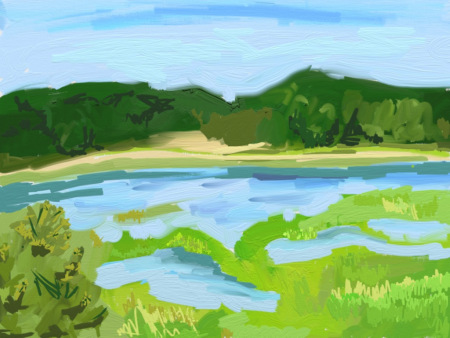
Here’s my view of Truro, Massachusetts, where we visited old friends. I used the ArtRage app with my Sensu Brush on my iPad. I seem to “paint” mostly when I’m on vacation. Love Cape Cod!
More digital artwork to come. For some of my previous iPad paintings, click here and here.


This week's Illustration Friday topic: Wild
a little hand lettering to celebrate the explosion of spring...
Another morning warm-up sketch I played with in Photoshop. I don't get to work a lot with gouache these days so I like to practice a bit when I can.

By:
Ellis Nadler,
on 3/15/2013
Blog:
Ellis Nadler's Sketchbook
(
Login to Add to MyJacketFlap)
JacketFlap tags:
cloud,
bird,
witch,
words,
death,
landscape,
Nadler,
hat,
moon,
sea,
iPad,
children,
food,
travel,
man,
tree,
drawing,
animals,
cartoon,
Add a tag
Four more new pages from my forthcoming
Memoirs.
Paper53 on iPad. Click to enlarge.

By:
Ellis Nadler,
on 2/7/2013
Blog:
Ellis Nadler's Sketchbook
(
Login to Add to MyJacketFlap)
JacketFlap tags:
travel,
man,
tree,
drawing,
cartoon,
memory,
words,
pen,
landscape,
mouth,
Nadler,
wash,
hand,
sea,
fear,
iPad,
Add a tag
Two more pages from the forthcoming
Memoir.paper53 on iPad. Click to enlarge.
Part 2 of "Sheep Lessons".
Our heroine has a nightmare

By:
Ellis Nadler,
on 1/2/2013
Blog:
Ellis Nadler's Sketchbook
(
Login to Add to MyJacketFlap)
JacketFlap tags:
drawing,
ink,
volcano,
pen,
landscape,
Nadler,
wash,
panels,
sea,
Add a tag
From an unrealized project, sketches for a further 54 views of Mt.Fuji. Previous efforts
here and
here.
Pen and wash, each page 19cm x 12cm. Click to enlarge.
Lately we have been treated to warm weather and beautiful sunrises and sunsets. Somehow these views from the car lane and the back porch have led to a series of imaginary landscapes.
In other business, I'm spending a lot of time building the entry for this year's christmas parade (pictures tomorrow, if you can stand the suspense....) Illustration friday this week is "stretch", I think I'll go do some of that before I head off to bed.
Good Night.

By:
Ellis Nadler,
on 9/10/2012
Blog:
Ellis Nadler's Sketchbook
(
Login to Add to MyJacketFlap)
JacketFlap tags:
animals,
red,
cartoon,
cloud,
bird,
words,
landscape,
Nadler,
panels,
hand,
hole,
shoes,
gouache,
travel,
dog,
Add a tag
A test page from my graphic novel.
Gouache. A3 size. Click to enlarge.

By:
Ellis Nadler,
on 9/4/2012
Blog:
Ellis Nadler's Sketchbook
(
Login to Add to MyJacketFlap)
JacketFlap tags:
woman,
religion,
drawing,
people,
cartoon,
ink,
words,
pen,
landscape,
eye,
Nadler,
hat,
moon,
chimney,
fire,
chair,
Add a tag
Let me share today's thoughts:
- Who put the Pope in ajar above the moon?
- I would pay a lot for a problem incinerator.
- Ah, the autumn of 1580....
- Why don't elbows sweat?
- Money-saving anaesthesia for our cash strapped health system.
- The ecstacy of the real.
- Broken newt? Why, glue your eye shut, of course.
Pen and ink with digital colour. A4 size. Click to enlarge.

By:
Ellis Nadler,
on 8/20/2012
Blog:
Ellis Nadler's Sketchbook
(
Login to Add to MyJacketFlap)
JacketFlap tags:
history,
man,
cartoon,
ink,
words,
pen,
death,
landscape,
Nadler,
psychology,
beard,
hole,
nude,
Add a tag
Why stop at two?
Pen and ink with digital colour. 14cm x 20cm. Click to enlarge.

By:
Ellis Nadler,
on 8/12/2012
Blog:
Ellis Nadler's Sketchbook
(
Login to Add to MyJacketFlap)
JacketFlap tags:
children,
travel,
woman,
love,
hair,
landscape,
graphite,
Nadler,
fish,
boat,
hand,
sea,
hole,
nude,
gouache,
unconscious,
Add a tag
The dream of Maria Ángeles from Almussafes, Spain. From a series of children's dreams collected by Roger Omar.
Gouache and pencil 25cm x 35cm. Click to enlarge.
View Next 25 Posts







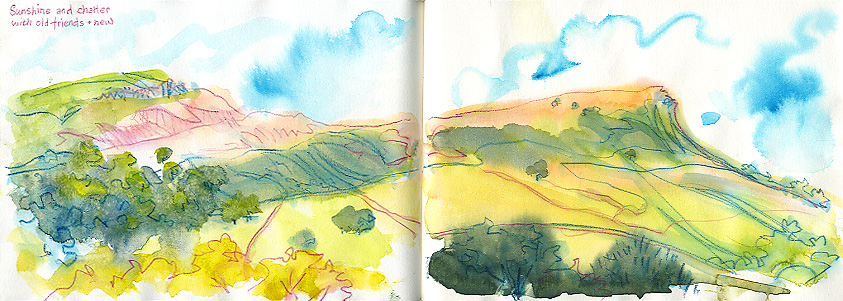




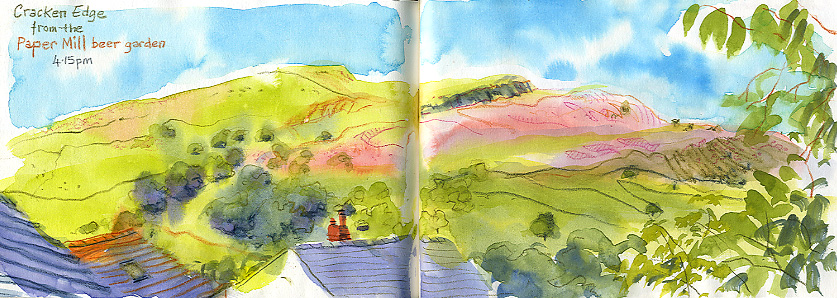



























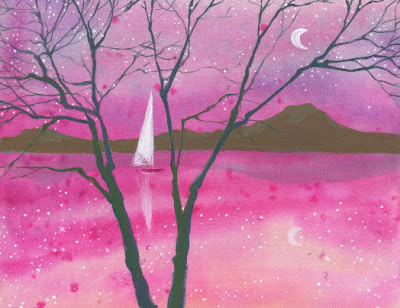




Stunning:)